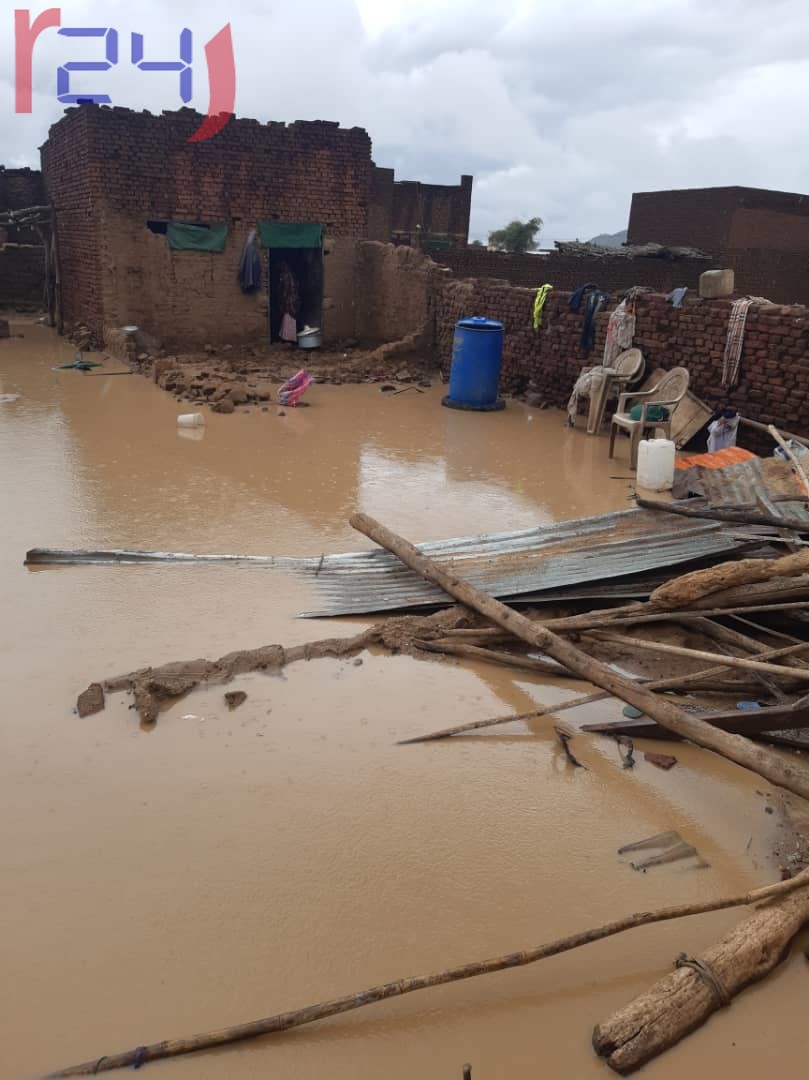According to United Office for Coordination of Humanitarian Affairs (OCHA) heavy rains continued in most of Sudan over the past days, resulting in more flooding, loss of lives and damages to houses and
other key infrastructure. As of 12 August, more than 185,000 people had been affected in 17 states, an increase of about 135,000 people during the week, according to initial data from the Government’s
Humanitarian Aid Commission (HAC). With almost 28,000 and about 27,000 people affected people respectively, Gezira and Kassala are the hardest-hit states so far, followed by Red Sea, North Kordofan, South Darfur, West Kordofan and Northern states, according to HAC.
Across the country, at least 14 schools have been damaged and over 1,600 water sources are now contaminated or non-functional. The storms have also affected livelihoods, with more than 1,200 livestock lost and several hectares of crops affected in the middle of the agricultural season.
In Blue Nile, heavy rains and flooding in Tadamon, Bau and Roseries localities have affected nearly 5,700 people, according to HAC. In Bout, Tadamon locality, the Khor Eldiled seasonal river burst its
bank, causing further damages to an area already impacted by the collapse of the Bout Dam in the end of July.
The severe damages caused in the embankment of the dam in two different areas caused the release of 5 million cubic metres of water that flooded at least 13 neighbourhoods in Bout Town. Nearly 800
houses and three schools are damaged or destroyed.
Besides the immediate effects and emergency caused, the collapse of the dam will likely have serious long-term consequences for over 100,000 people, including IDPs and refugees, who rely on it as their
primary source of water. According to humanitarians in Bout, the population is already using water from open sources, which combined with poor sanitation conditions and open defecation practices,
increases the risk of disease outbreaks.
In Darfur region, flash floods reportedly killed 16 people, including two internally displaced people (IDP) from Otash settlement, in South
Darfur, and three other people living in displacement camps in Kebkabiya locality, North Darfur, according to UNHCR. In East Darfur, flash floods and heavy rain between 1 and 5 August damaged about 800
shelters, over 720 latrines and two schools in Ed Daein area, affecting over 2,000 families, according to preliminary data from humanitarians. Many are now displaced, seeking shelter with neighbours
or relatives.
In South Kordofan, at least 3,200 people are suffering the consequences of flooding reported in Abu Kershola and Habila localities. The rains have left roads impassable, hampering access to the families in need of assistance.
The torrential rains and flooding compound increasing and emerging humanitarian needs in Sudan, as the country deals with one of its worse food crises of the last decade, a sharp economic downturn, the
escalation of violence in Darfur and Red Sea State, the COVID-19 pandemic and the recently declared polio outbreak.
The Sudan Meteorological Authority has warned that more heavy rainfall is expected during August and September in most of the country, which can lead to further flooding and displacement.

